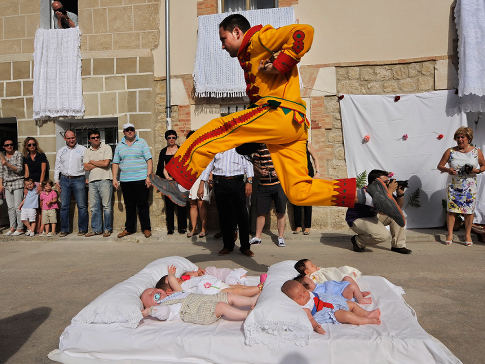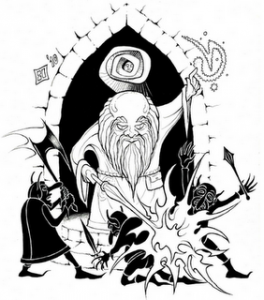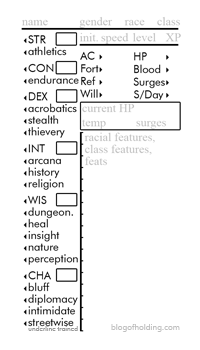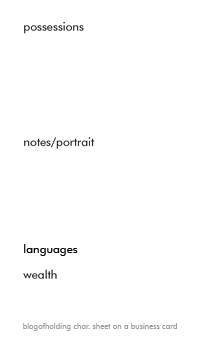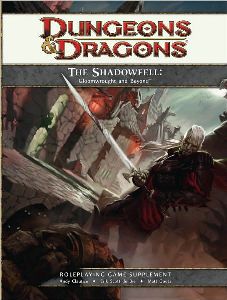I ran a solo monster that one of my players described as “maybe too gross”, which means, success! I thought I’d share it in case you want to disturb your players.
I’m not providing specific attack and damage numbers, since I just ran it using Monster Manual 3 on a business card. I made it a 14th-level solo, but it should work at any level.
Description: The creature was found in the throne room of a once-magnificent ghoul-infested palace. It’s a large, twisted collection of bodies, body parts, and palace treasure, all in roughly human form: each of its arms is a whole person, bending at the waist like an elbow and using arms like fingers; its stomach is a barrel of brandy; and its head looks at first to be tiny, but it’s just a regular-sized human head on the top of a huge, bulky body. Instead of a jawbone, it has a hand, the fingers of which each end with a tooth.
The monster’s left shoulder is a golden chest with a key in the lock, and the animate corpse who forms its left arm is attached to the lid of the box. The creature has been impaled through-and-through with a golden harpoon, which doesn’t seem to have slowed it down.
Note: This is a lot of information to give the players. I shared out the details, like the cask and the harpoon, over several rounds.
Actions: This was a solo monster, so I had it roll 2 initiatives.
On the first initiative, the monster made a pretty normal attack: a level-appropriate slam that targeted 1 or 2 adjacent creatures.
On the second initiative, it would do something unique and creepy every round. This was the round that really bothered the players.
Round 1: The dangling body of a harlequin, missing its head, raises a flute to a different head, and plays a tune. This is a will attack that causes the target to make a basic attack on an ally. (In my game, this attack critted, so I ruled that it became a Dominate (save ends) rather than a single basic attack.)
Round 2: A beautiful courtesan lodged in the creature’s back takes out a bottle of perfume and sprays it (blast 3, fortitude attack). Anyone hit must kiss the courtesan as a minor action (possibly spending a move action to approach) or take 15 damage at end of their next turn.
Round 3: A protruding chainmail hand dislodges the golden harpoon and throws it. It’s a +3 spear.
Round 4: the jaw-hand comes out of the mouth (extending unnaturally far, giving this attack reach) and makes a non-damaging Grab attack. If the target is grabbed, they are pulled adjacent to the monster, next to its mouth.
Round 5: If a target is still Grabbed from round 4, the mouth bites them, doing massive damage. If not, the monster roars in frustration, coating people in necrotic spittle (blast 5, low necrotic damage).
Round 6: 2 legs hanging from the creature’s torso wrap around an adjacent target (a Grab and damage).
Round 7: A dead, unconscious, or bloodied target (in that order or preference) is grabbed and stuffed into the creature’s body (with appropriate gross sound effects). If the creature is unconscious, it may make escape attempts on its turn.
Round 8 and on: Anyone grabbed on round 6 (alive or dead) is forced to reach out of the creature and make a basic attack.
After around 8, the monster is out of tricks, but battles don’t usually go that long anyway. If they do, things are probably getting boring, so I planned to have the monster start shedding body parts and losing hit points.
Natural 1s: If any PC rolled a natural 1 on a melee attack on the creature, it got an immediate action that let it move its full movement in a straight line, through opponents. Anyone in the way suffered a Fortitude attack or was knocked prone and took a little damage. This let the creature break out of flanks and occasionally threaten ranged opponents.
Bloodied: Like many recent boss monsters, all status effects on the creature ended when it became bloodied.
Countermeasures: The PCs could tinker with the creature in various ways to hurt it.
If a successful Thievery check was made on the golden box in its left shoulder, the lid would come off, along with the attached left arm. After that, the creature would only be able to target one creature, instead of two, with its main attack. (My PCs tried this several times but failed the thievery check.)
If the PCs pulled out the golden harpoon, they got a +3 spear/javelin, and prevented the special attack on round 3.
If the PCs turned the spigot on the barrel in the monster’s stomach, high-quality brandy would run out, filling every square the creature occupied for the rest of the battle. If the PCs decided to light the brandy on fire, it would do damage to any creature in a brandy-soaked square.

